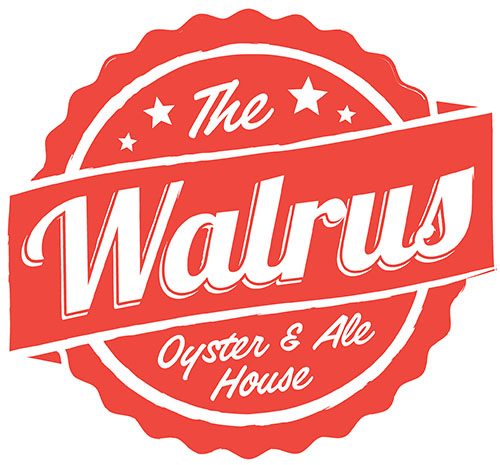Table Of Content
- More to Read
- Hank's Oyster Bar (Washington, D.C.)
- Steephead Salamander Search, and the Apalachicola’s Ice Age...
- More From the Los Angeles Times
- Goal B — Prioritized Strategies for Sustainable Management of Oyster Resources
- Eater Seattle
- It is believed the tourist got too close to the animal in an effort to take a photo of the animal when they

They could also correlate salinity with freshwater discharge from the Woodruff Dam. “The Plan” also recommends looking at nutrients, temperature, pH, and other water quality metrics. One factor decades in the making was freshwater input from the Apalachicola River. When the fishery crashed in 2012, the river had been in drought operations for several months, and for the third time since 2007. The Apalachicola is managed together with the Flint and Chattahoochee Rivers in Georgia.
More to Read
“The Plan” recommends rapid ‘spot-checks’ where oystermen bring up sections of reef to get a quick sense of the health at any point in the bay. Part of Goal A is to establish how to measure the health of an oyster reef. Commercial oyster reefs in Apalachicola Bay are subtidal, meaning they are always submerged. They might count oysters within a one-meter quadrat, both market-sized adults and the generation coming up to replace them. A key indicator of reef health is the number of spat that settle there; if they aren’t settling, new oysters won’t grow.
Hank's Oyster Bar (Washington, D.C.)
When the winter bars opened in September, the Apalachicola River had been in drought operations for four months. By the time 2012 ended, it had recorded the lowest flows in the river’s history. The second-lowest flow was in 2011, the year with the second-highest landings, or oysters brought to the dock. Increased salinity and predation are listed as contributing factors, but so is a high level of oyster harvesting.
Steephead Salamander Search, and the Apalachicola’s Ice Age...
“The cut of lamb changes every year, but some things stay the same,” she writes. “We always cook it on a grate over a fire built in a used wine barrel the way Russell’s grandfather did.” And for her annual Normandy dinner and mussels steamed in cider. A large rock provides more surface for a spat to settle on and is harder to move around. Another benefit is that oyster tongs are less likely to damage large rocks.

The Army Corps of Engineers, not Georgia, manages the water based on rules set forth by the U.S. However, Florida contended that if Georgia had used water more responsibly, there would have been enough to keep the Corps from enacting drought operations. The Apalachicola is Florida’s largest river in terms of volume, flowing 106 miles from the Georgia border and into Apalachicola Bay. When Georgia experiences drought, the ACE holds water back so that it can be used by farms along the Flint River and by cities and towns, including Atlanta, along the Chattahoochee. During drought operations, the Woodruff Dam outputs an average of 5,000 cubic feet per second, the lowest allowed by law.
The Walrus and the Carpenter's Renee Erickson & Jeremy Price on Expansion and a New Cookbook - Eater
The Walrus and the Carpenter's Renee Erickson & Jeremy Price on Expansion and a New Cookbook.
Posted: Wed, 11 Sep 2013 07:00:00 GMT [source]
Dr. Brooke hopes that as an independent entity, members of the commercial seafood community will be invested in it. Sandra Brooke says that with all the limits and emphasis on enforcement, buy-in from the commercial fishing community is critical. These guidelines put the burden of sustainability, in part, on Apalachicola oystermen. It’s a burden they would share with FWC, who would have to enforce limits and closures. Walruses in Svalbard became protected in 1952 after heavy commercial exploitation over the previous three centuries had reduced the local population to just a few hundred. Under local law, it is illegal to cause unnecessary disturbance to wildlife in Svalberg, which lies halfway between the northern coast of mainland Norway and the North Pole.
Whisk in the mustard, add the cider, then increase the heat to medium-high. Add the mussels and cook, covered, until they begin to open, about 5 minutes. Remove the lid and begin transferring the mussels that have cooked to a large bowl, stirring and prodding until all the mussels have opened and have been transferred to the bowl. (Discard any mussels that do not open.) Increase the heat to high and simmer the cider for 3 minutes, or until it has reduced by about a third.
Eater Seattle
Dr. Brooke is a senior researcher at the Florida State University Coastal and Marine Laboratory. She is also the principal investigator of the Apalachicola Bay System Initiative (ABSI). Since the measures were introduced, the population of walruses has grown steadily but it remains on the Norwegian National Red List. “The governor encourages everyone to keep a good distance from walruses so that they are not disturbed and so that no danger to people occurs,” the governor’s office said in a statement.
During oral arguments, one justice referred to a report that the floor of the bay looked like a “gravel parking lot.” You can see this in a January 2013 Ecology Blog video. It’s homey, complete with picnic tables and a “serve yourself ” rule that explains why patrons cut their own bread, fetch their own water, and choose their own wine from a shelf next to the bar. The Walrus opened its second location at The Mall in Columbia, Maryland in spring of 2018!

If conditions change during the season, FWC could again adjust bag limits or close the bay, or parts of the bay that are struggling. After the bay closed, ABSI tested multiple materials to see which best stabilized the bay floor, trying oyster shell, fossilized oyster shell, and limestone rock. Limestone is often made of calcium carbonate, the same material as oyster shells. This is because limestone forms from oysters and other marine organisms over geologic time.
After their success with limestone, ABSI tried concrete and found it worked about as well. Now that we’ve reviewed the challenges facing the bay, let’s dig into ABSI’s recommendations to meet those challenges. Oysters reach maturity faster than in other estuaries and had always regrown quickly after intense harvesting. “What it is is a list of options and recommendations to government entities, that have a consensus of stakeholder agreement,” says Dr. Sandra Brooke.

No comments:
Post a Comment